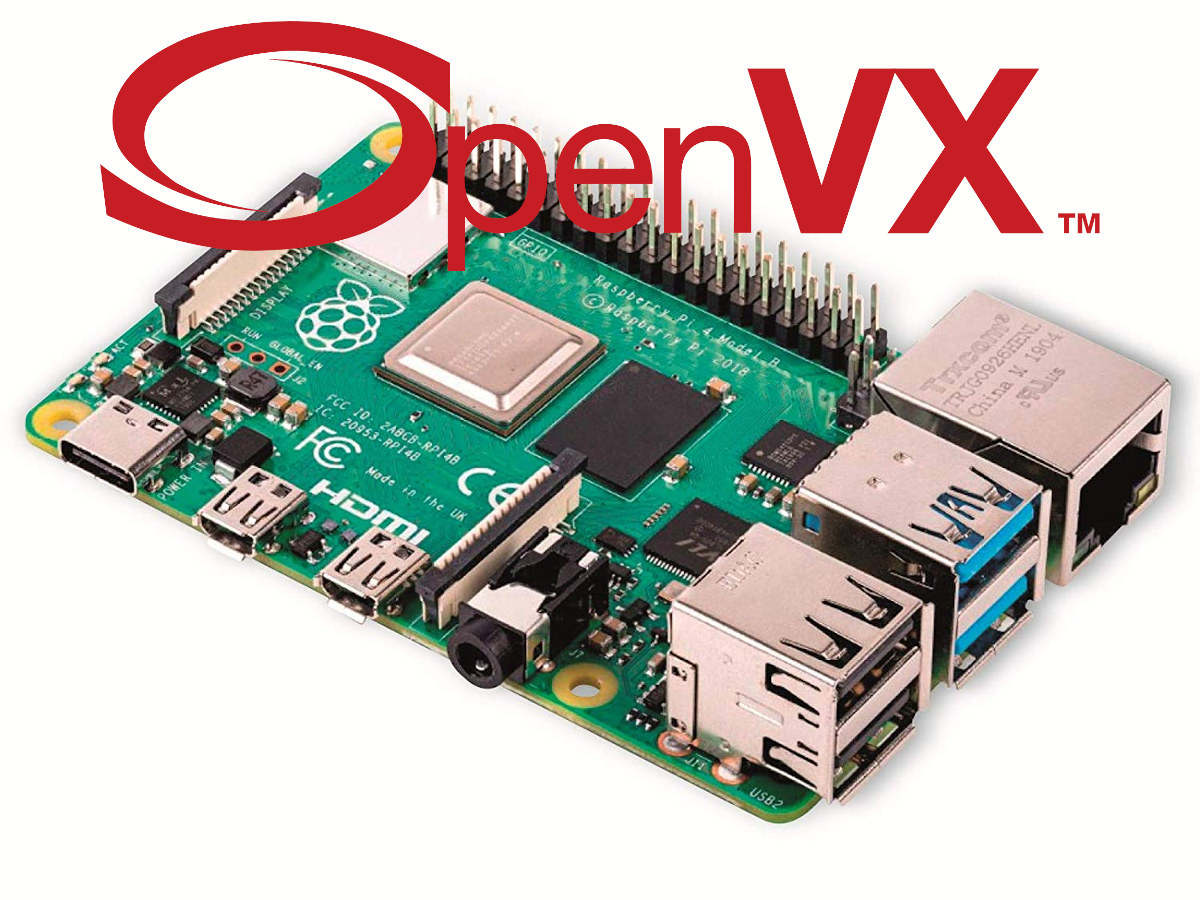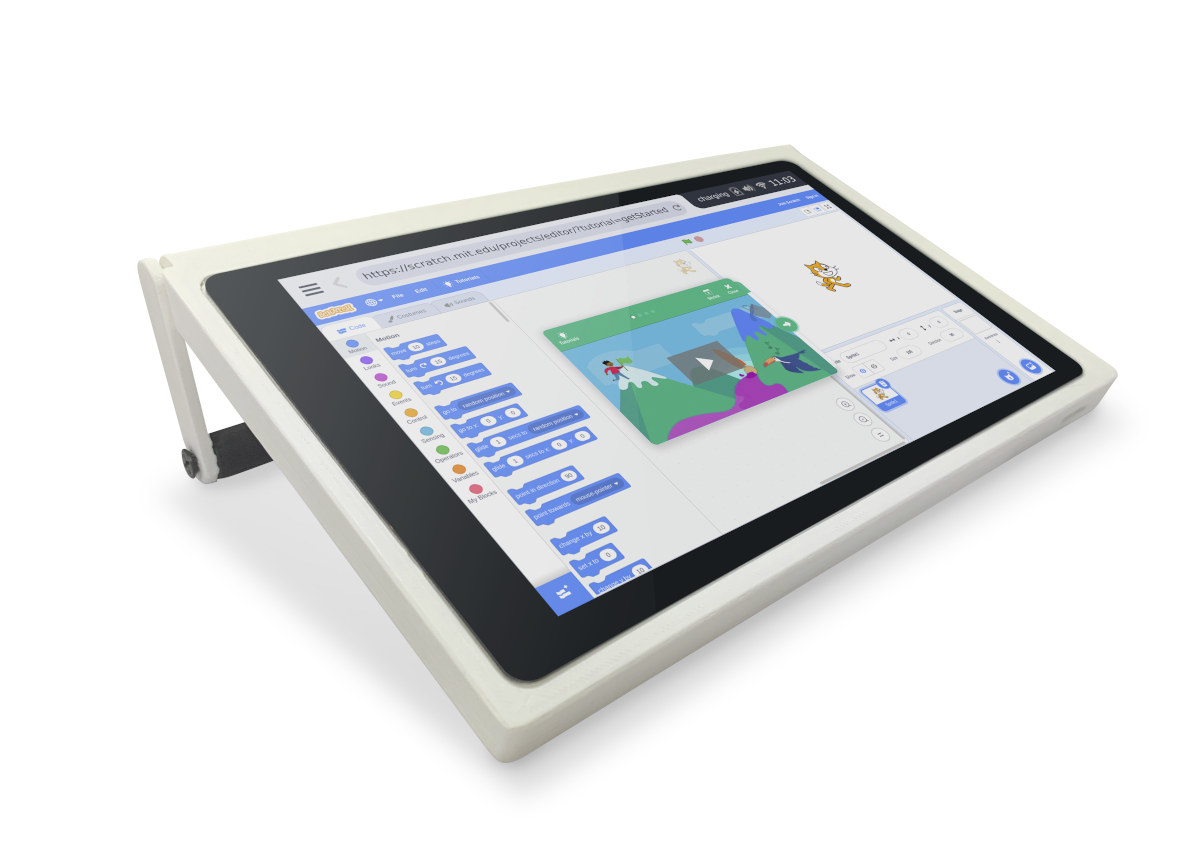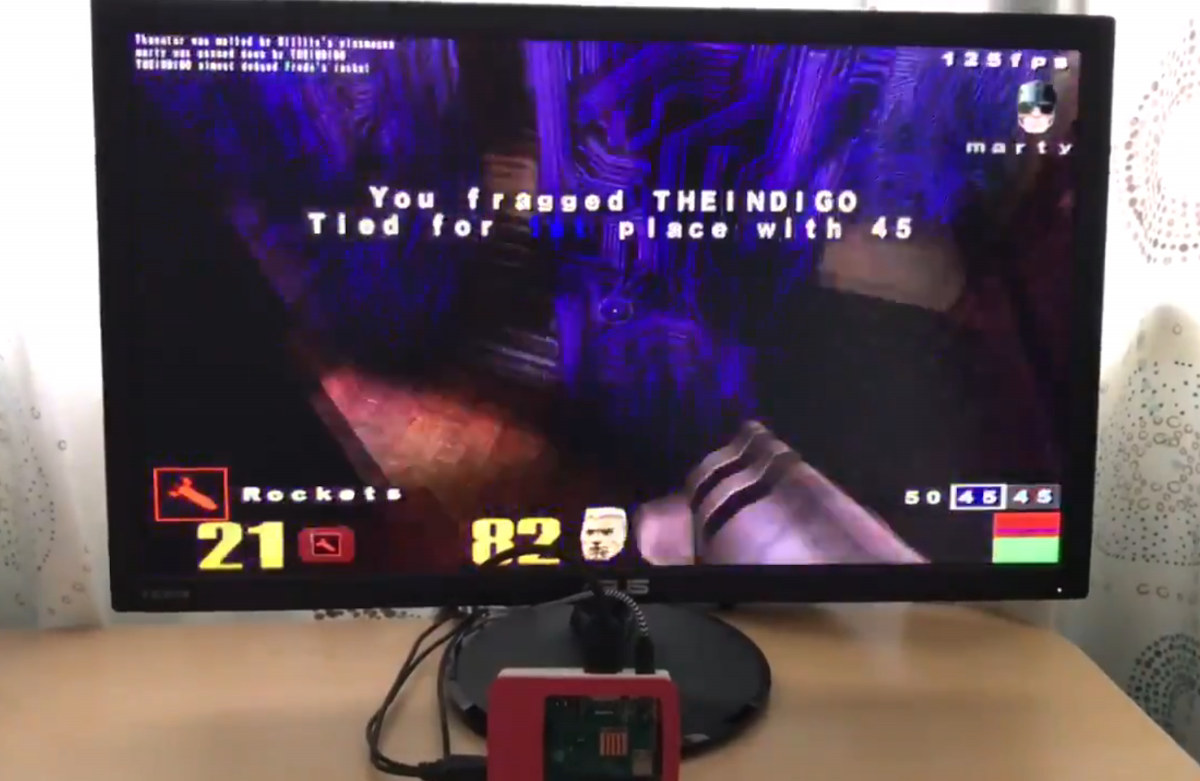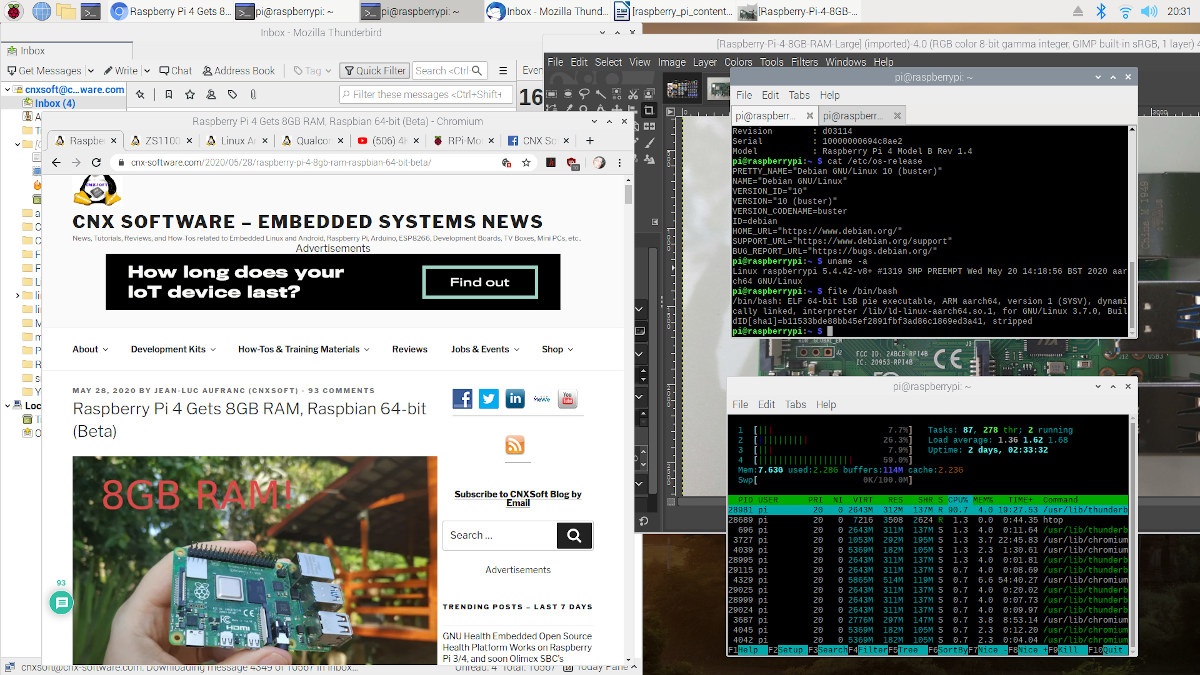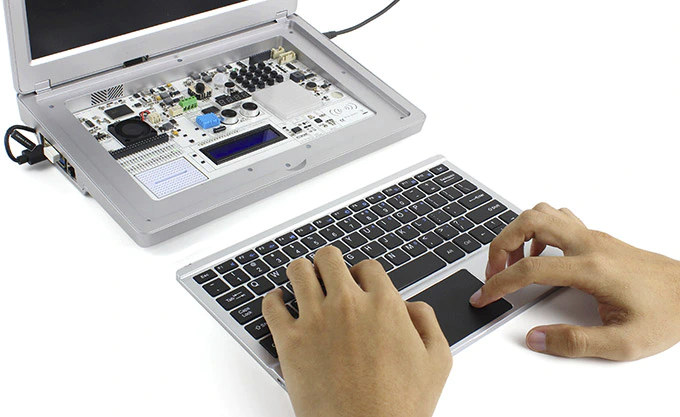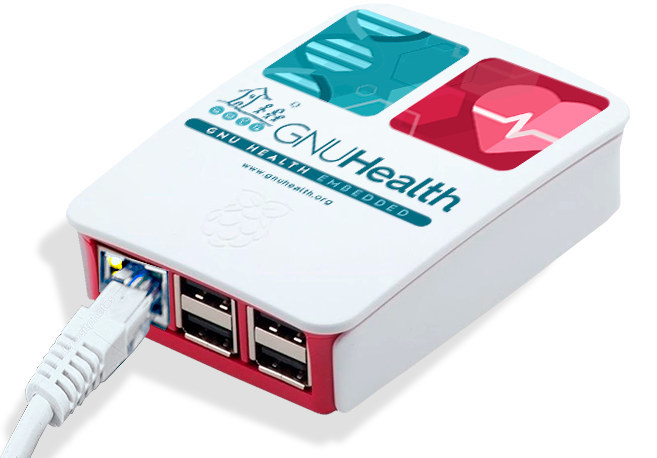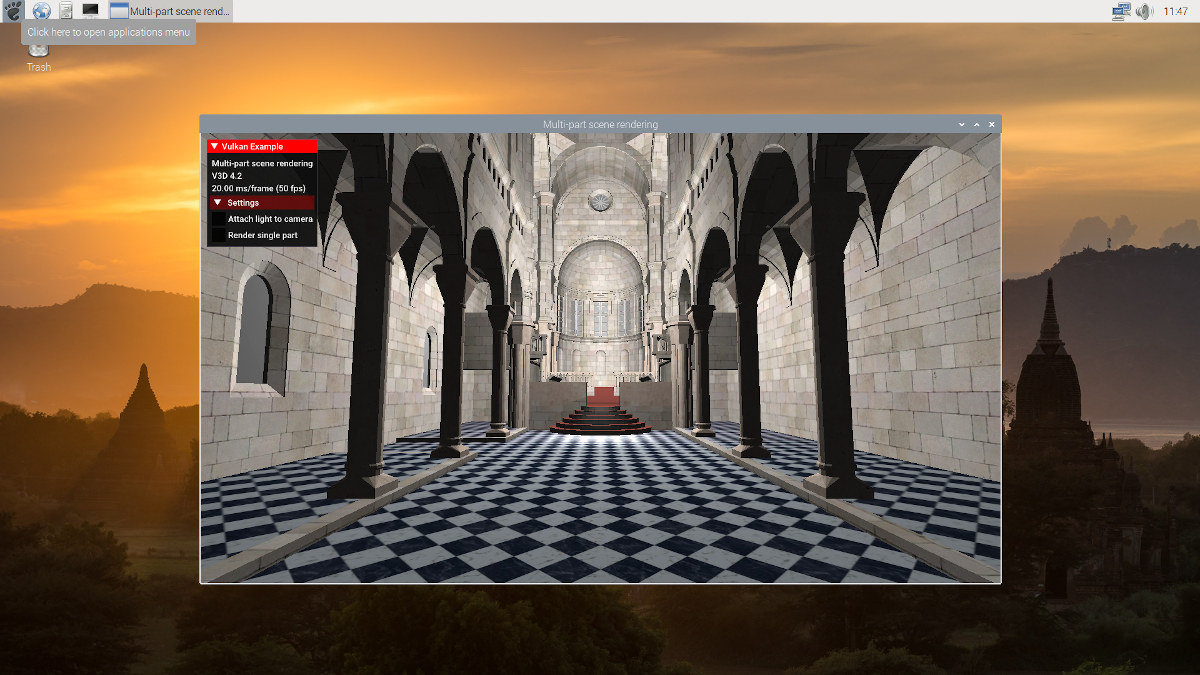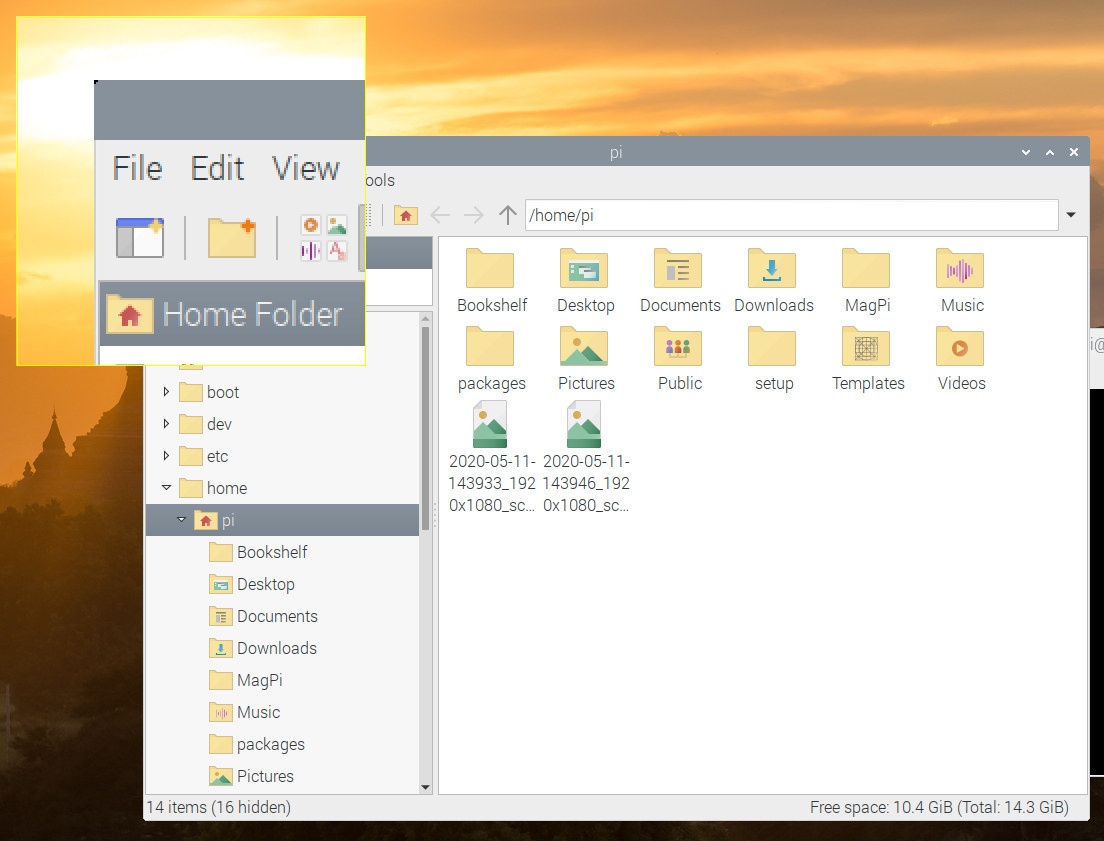OpenVX is an open, royalty-free API standard for cross-platform acceleration of computer vision applications developed by The Khronos Group that also manages the popular OpenGL ES, Vulkan, and OpenCL standards. After OpenGL ES 3.1 conformance for Raspberry Pi 4, and good progress on the Vulkan implementation, the Raspberry Pi Foundation has now announced that both Raspberry Pi 3 and 4 Model B SBC’s had achieved OpenVX 1.3 conformance (somehow dated 2020-07-23). Raspberry Pi OpenVX open-source sample implementation passes the Vision, Enhanced Vision, & Neural Net conformance profiles specified in OpenVX 1.3 standard. However, it is NOT intended to be a reference implementation, as it is not optimized, production-ready, nor actively maintained by Khronos publically. The sample can be built on multiple operating systems (Windows, Linux, Android) using either CMake or Concerto. Detailed instructions are provided for Ubuntu 18.04 64-bit x86 and Raspberry Pi SBC. Here’s the list of commands to […]
CutiePi Raspberry Pi CM3+ Lite based Tablet Launched on Kickstarter
Raspberry Pi Compute Module 3+ Lite based CutiePi open-source tablet has been in the making for well over a year, and the company has made enough progress to launch a Kickstarter campaign with the Raspberry Pi tablet offered for $169 and up. CutiePi specifications: SoM – Raspberry Pi Compute Module 3+ Lite with Broadcom BCM2837 quad-core Cortex-A53 processor and 1GB RAM Storage – MicroSD card slot Display – 8-inch 5-point multi-touch display with 1280×800 resolution Video Output – Micro HDMI Audio – 2W 8Ohm speaker Camera – 5MP front-facing camera Connectivity – WLAN 802.11 b/g/n WiFi 4 and Bluetooth 4.0 (RTL8723BS) USB – 1x USB type-A port Expansion – 6x GPIO pins Sensor – Gyroscope Misc – Handle that doubles as a stand Battery – 5,000 mAh Li-Po battery Power Supply – 5V via USB Type-C port; STM32 MCU handles power management and battery level monitoring Dimensions – 213 x […]
Raspberry Pi VideoCore IV Boards Get an Unofficial Vulkan Driver Good Enough to Play Quake 3
The Raspberry Pi Foundation is collaborating with Igalia to work on everything related to graphics support for VideoCore VI GPU found in Raspberry Pi 4’s Broadcom BCM2711 SoC. This lead to OpenGL ES 3.1 conformance at the beginning of the year, and good progress with Raspberry Pi 4 Vulkan support. There’s no plan to work on an official Vulkan driver for earlier Raspberry Pi boards with VideoCore IV GPU, but since the Raspberry Pi Foundation released open-source VideoCore IV driver and documentation several years ago, it’s, in theory, possible for skilled developers to improve on it. That’s exactly what Martin Thomas, an NVIDIA engineer, has done in his spare time, and after two years of work, a Vulkan driver for Raspberry Pi VideoCore IV board – RPi-VK-Driver – has been released on Github. Pi-VK-Driver implements a subset of the Vulkan, and since it is not fully conformant to the standard […]
Checking Out Raspberry Pi OS 64-Bit on Raspberry Pi 4 8GB RAM
The Raspberry Pi 4 with 8GB RAM launched a couple of weeks ago together with the beta version of Raspberry Pi OS 64-bit. Note that you should currently use the 32-bit version of Raspberry Pi OS (previously known as Raspbian) as the 64-bit still has bugs and missing features, but I want to find out the current progress, so I installed raspios_arm64-2020-05-28/2020-05-27-raspios-buster-arm64.zip and had no problem to boot the board. Raspberry Pi OS 64-bit System Information After going through the setup wizard in the desktop environment to configure the language, time, networking, etc…, and make sure the OS is updated, I checkout some information:
|
1 2 3 4 5 6 7 8 9 10 11 12 13 14 |
pi@raspberrypi:~ $ cat /proc/cpuinfo processor : 0 BogoMIPS : 108.00 Features : fp asimd evtstrm crc32 cpuid CPU implementer : 0x41 CPU architecture: 8 CPU variant : 0x0 CPU part : 0xd08 CPU revision : 3 ... Hardware : BCM2835 Revision : d03114 Serial : 10000000694c8ae2 Model : Raspberry Pi 4 Model B Rev 1.4 |
I do have a Raspberry Pi 4 Model B Rev 1.4 with 8GB Memory (revision: d03114), the image comes with a 64-bit Linux kernel:
|
1 2 |
pi@raspberrypi:~ $ uname -a Linux raspberrypi 5.4.42-v8+ #1319 SMP PREEMPT Wed May 20 14:18:56 BST 2020 aarch64 GNU/Linux |
and we do get a 64-bit rootfs.
|
1 2 |
pi@raspberrypi:~ $ file /bin/busybox /bin/busybox: ELF 64-bit LSB shared object, ARM aarch64, version 1 (SYSV), dynamically linked, interpreter /lib/ld-linux-aarch64.so.1, for GNU/Linux 3.7.0, BuildID[sha1]=fdf7b3dd496e8fd678a0bda5540f9fae4d313d8f, stripped |
All good. Known issues Before starting the review, let’s make ourselves aware […]
CrowPi2 Raspberry Pi 4 Laptop Doubles as Electronics Learning Kit (Crowdfunding)
CrowPi portable learning kit for Raspberry Pi 3 B+ and Pi Zero boards was launched in 2018. It comes with a 7″ display, several sensors, buttons, a breadboard, and more all packed in a small suitcase. Elecrow has now started a new crowdfunding campaign on Kickstarter to fund the second generation portable electronics learning kit: CrowPi2 which looks much more like a laptop than a suitcase found in the first model thanks to a large display, and a detachable keyboard placed on top of the electronic prototyping/learning area. It’s also more powerful thanks to the latest Raspberry Pi 4 SBC. CrowPi2 specifications: Compatible Raspberry Pi boards – Raspberry Pi 3B/B+, Raspberry Pi 4 Display – 11.6-inch 1920×1080 IPS screen Camera – 2MP camera Audio – Built-in microphone and stereo speaker; 3.5mm audio jack Keyboard – 2.4GHz detachable wireless keyboard (QWERTY only) with touchpad Sensors and Modules under the keyboard: Displays […]
GNU Health Embedded Open Source Health Platform Works on Raspberry Pi 3/4, and soon Olimex SBC’s
GNU Health (GH) is a free and open-source Health and Hospital Information System (HIS) that can manage the internal processes of a health institution, such as financial management, electronic medical records (EMR), stock & pharmacies or laboratories (LIMS). It is already used in various hospitals, health centers, and medical research facilities in various countries, most developing countries, across the world. The program would normally be installed on x86 servers running Linux or FreeBSD, but there’s also a version for Raspberry Pi 3 and 4 based on openSUSE called GNU Health Embedded, and work is being done to port the solution to Olimex OlinuXino SBC’s. Contrary to what the photo above implies, GNU Solidario does not sell the hardware pre-loaded with GNU Health Embedded, but you can download it for free from their servers, and if you want to support the project you could always make a donation. As I understand […]
Raspberry Pi 4 Vulkan Source Code Released, More Complex Vulkan Demos Supported
The Raspberry Pi Foundation announced they had started working on Vulkan support for Raspberry Pi 4 in January with the initial implementation being able to render the “hello world of graphics”, i.e. a basic triangle. Progress are been made with the Mesa 3D library been able to render more complex demos, specifically Sascha Willems Vulkan demos. That’s encouraging, but the current Vulkan implementation is still not usable to play games on Raspberry Pi, and some of Sascha’s Vulkan demos are still not working at the time of writing. Yet the list of working demos is fairly long: distancefieldfonts descriptorsets dynamicuniformbuffer gears gltfscene imgui indirectdraw occlusionquery parallaxmapping pbrbasic, pbribl, pbrtexture pushconstants scenerendering shadowmapping, shadowmappingcascade specializationconstants sphericalenvmapping stencilbuffer textoverlay texture, texture3d, texturecubemap triangle vulkanscene The other good news is that Igalia and the Raspberry Pi Foundation have now released the source code of v3dv fork of Mesa library on Freedesktop Gitlab so […]
Bye Raspbian! Long Live Raspberry Pi OS!
Last week, we reported a “new” Raspberry Pi 4 SBC with 8GB RAM launched last week, together with a beta version of “Raspbian” 64-bit needed to make full use of the extra RAM, although the 32-bit version can also address the full 8GB thanks to LPAE, but with a limitation of 3GB per process. It turns out the launch of the new board, effectively killed Raspbian. But by name only, as the recommended Raspberry Pi operating system is now called Raspberry Pi OS with three 32-bit images namely Desktop with recommended apps such as Wolfgram and Mathematica, Desktop, and Lite for headless applications, as well as the Raspberry Pi OS 64-bit beta that’s yet to be officially released, but can be downloaded from the forums and works on Raspberry Pi 3 and 4 boards. Apart from the name change, and support for 64-bit kernel and rootfs, the Raspberry Pi Foundation […]


